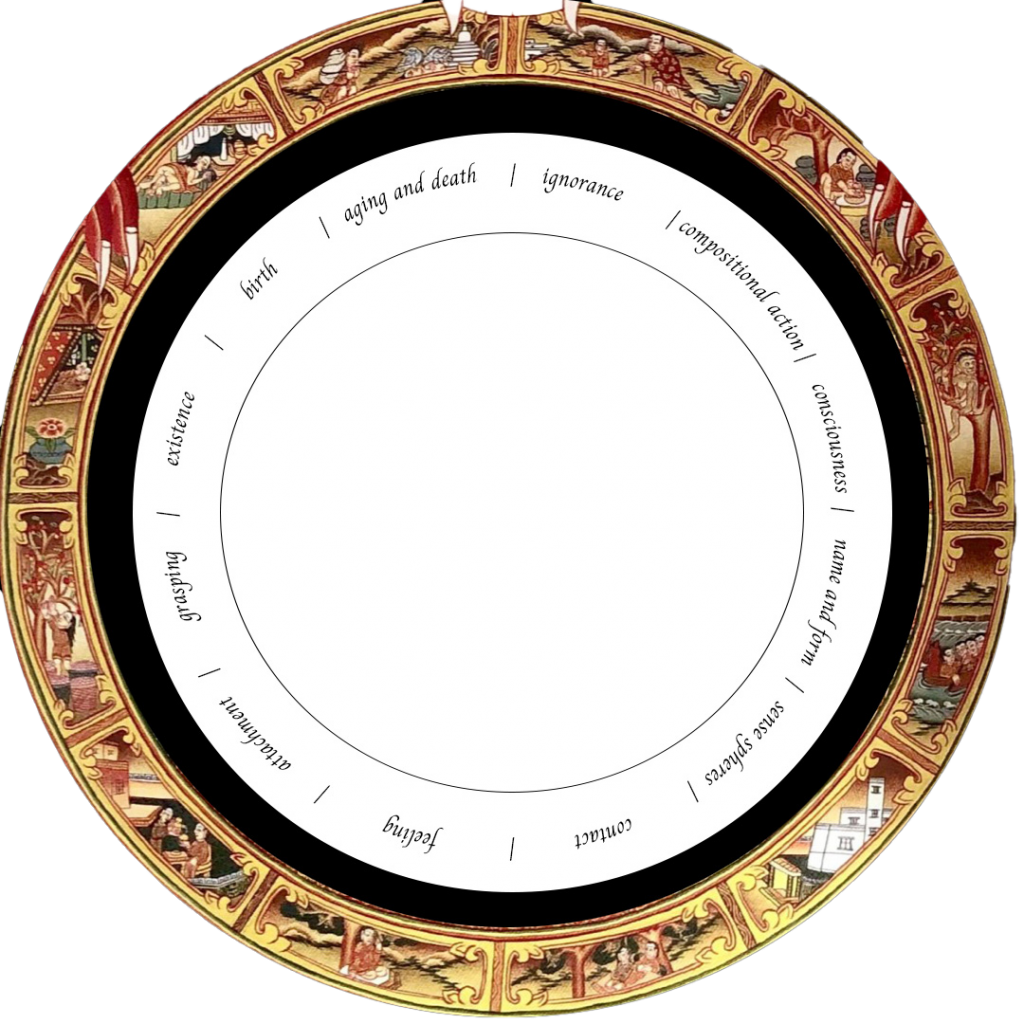
From “The Meaning of Life, Buddhist Perspectives on Cause and Effect”
By H.H. The Dalai Lama
Chapter 1: The Buddhist Worldview
section: Behavior and View
Behavior
The root of all of the Buddhist teaching is compassion.
View
Dependent-arising is the general philosophy of all Buddhist systems even though many different interpretations are found among those systems. In Sanskrit the word for dependent-arising is pratityasamutpada. The word pratitya has three different meanings – meeting, relying, and depending- but all three, in terms of their basic import, mean dependence. Samutpada means arising. Hence, the meaning of pratityasamutpada is that which arises in dependence upon conditions, in reliance upon conditions, through the force of conditions. On a subtle level, it is explained as the main reason why phenomena are empty of inherent existence.
In The Rice Seedling Sūtra, Buddha speaks of dependent-arising in three ways:
- Due to the existence of this, that arises.
- Due to the production of this, that is produced.
- It is thus: due to ignorance there is compositional action; due to compositional action there is consciousness; due to consciousness there is name and form; due to name and form there are the six sense spheres; due to the six sense spheres there is contact; due to contact there is feeling; due to feeling there is attachment; due to attachment there is grasping; due to grasping there is the potentialized level of karma called “existence”; due to existence there is birth; and due to birth there is aging and death.
Twelve Links of Dependent Origination (D1-12)
- (D1) ignorance
- (D2) compositional action
- (D3) consciousness
- (D4) name and form
- (D5) sense spheres
- (D6) contact
- (D7) feeling
- (D8) attachment
- (D9) grasping
- (D10) existence
- (D11) birth
- (D12) aging and death:
With regard to the twelve links of dependent arising, there are basically two modes of explanation, one in terms of thoroughly afflicted phenomena and the other in terms of pure phenomena. In the Buddha’s root teaching of the four noble truths, there are two sets of cause and effect: one set for the afflicted class of phenomena and another for the pure class. Just so, here in the twelve links of dependent-arising there are procedures in terms of both afflicted phenomena and pure phenomena. Among the four noble truths, true sufferings -the first truth- are effects in the afflicted class of phenomena, and true sources — the second truth — are their causes. In the pure class of phenomena, true cessations, the third truth, are effects in the pure class, and true paths, the fourth truth, are their causes. Similarly, when it is explained in the twelve links of dependent-arising that action is produced and so forth due to the condition of ignorance, the explanation is in terms of the afflicted procedure; when it is explained that action ceases and so forth due to the cessation of ignorance, it is in terms of the procedure of the pure class. The first is the procedure of the production of suffering, and the second is the procedure of the cessation of suffering.
The twelve links of dependent-arising are thus laid out in terms of a process of affliction and in terms of a process of purification, and each of these is presented in forward and reverse orders. Thus, in the forward process, it is explained that:
Due to the condition of ignorance, action arises; due to compositional action, consciousness arises; due to consciousness, name and form arises; due to name and form, the six sense spheres arises; due to the six sense spheres, contact arises; due to contact, feeling arises; due to feeling, attachment arises; due to attachment, grasping arises; due to grasping, “existence” arises; due to existence, birth arises; and due to birth there is aging and death.
Because this mode describes how suffering is produced, it is an explanation of the sources that produce suffering. In reverse order it is explained that:
Here emphasis is on the first of the four noble truths, true sufferings themselves, which are the effects. Then, in terms of the process of purification, it is explained that:
This explanation is given in terms of the purified class of phenomena with emphasis on the causes, the true paths, second among the four noble truths. In reverse order, it is explained that:
“Undertaking this and leaving that,
Enter into the teaching of the Buddha
Like an elephant in a thatch house,
Destroy the forces of the Lord of Death.
Those who with thorough conscientiousness
Practice this disciplinary doctrine
Will forsake the wheel of birth,
Bringing suffering to an end.”


Companion piece @gibransoto on Instagram.